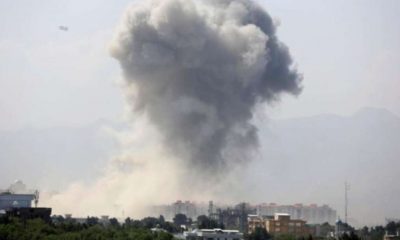ASIA
Taliban has an enemy to fight – ISIS
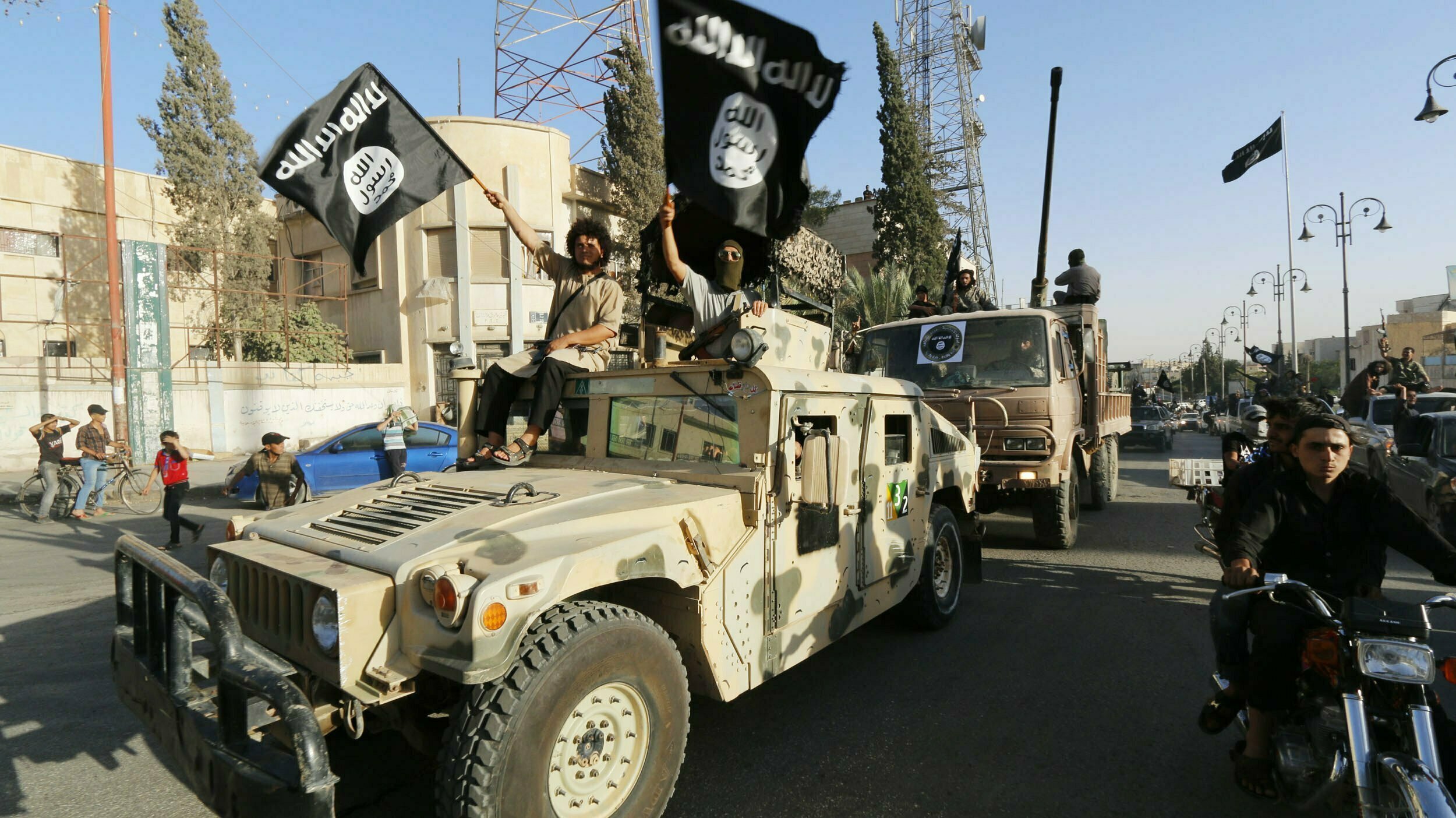
The US has entered Afghanistan after 9/11 incident in the pretext of fight against terrorism. In that time Afghanistan was home to the Taliban, current Afghanistan ruler, and al-Qaeda terrorist group. The US blamed notorious al-Qaeda for the deadly incident and vowed revenge and was able to kill Osama bin Laden, the founder and first leader of al-Qaeda in Pakistan in 2011 and his successor Ayman al-Zawahiri in a drone strike in Afghanistan just recently.
But the point is that when US entered Afghanistan there were the Taliban government and the presence of only al-Qaeda terrorist group, but how many terrorist groups are operating in Afghanistan now after US ended its 20 years of military presence in August 2021.
So reasonably, only al-Qaeda should have remained. Actually the number is much higher. There are over 20 terrorist groups, including the brutal Islamic State (IS), aka ISIS emerged under the very nose of US presence and the Afghan intelligence backed by the western countries. The group first appeared in 2014, and was taken lightly and even their presence was strongly denied until it carried out several deadly attacks, targeting mosques, shrines, hospitals, mortality clinics, wedding halls, passenger buses, Sikh temple and Hindu Gurdwara and etc… With the scope of these attacks, ISIS has been apparently pursuing an ideology of sectarian war, after failing to do so in Iraq and Syria.
It’s not the stop point, ISIS for years approached Taliban commanders, al-Qaeda fighters, Uzbekistan Islamic Movement and East Turkestan Islamic Movement with full preparations to further cement ties and find a strong foothold inside Afghanistan with their support.
Abdulrauf Hadim, one of the famous Taliban commanders joined ISIS and some members also pledged loyalty to the group after the death of Mullah Omar, the founder and leader of Taliban in Pakistan in 2013, but it was announced publicly in 2015.
Taliban is determined to fight against ISIS
But the Taliban has never shown any mercy to the ISIS, and never accepted it. Taliban has a strong resolve to fight ISIS terrorists and eliminate them from Afghanistan.
Taliban arrested over 670 ISIS militants in the last three months of their ruling starting from August 15, and also 25 hideouts of the group were destroyed in capital city Kabul, and eastern Nangarhar province during the span of time. Taliban also accused the former government of Ashraf Ghani for strengthening ISIS in order to use them against the Taliban during the war.
But still ISIS is posing a great threat to Afghanistan and also as a matter of worry for countries in the neighborhood and beyond. ISIS continues spilling blood in Afghanistan and intensified its attacks in the past several months and Taliban is seemingly are scrambling to quell the curtail terrorism waged by the terrorist group. In last several months, the terror group was particularly gruesome with its deadly attacks in Balkh, Kunduz, Kabul in which at least 100 people were killed and 200 more were wounded.
Russia, China and Iran can help
ISIS is following a revisionist policy by dividing the world into two – Darul Islamd and Darul Kufr, and a zero-tolerance or acceptance of the nation-state. This is the core reason which Russia, China and Iran among other regional countries described the presence of ISIS in Afghanistan as a big threat to their territorial integrity as well as peace and security of the region.
A senior Taliban official speaking to Harici said that ISIS is being used against the Taliban by the foreign powers as a pressure tool to terrify the current government and also to undermine the capability of the intelligence department.
“We will stop this deadly conspiracy against our innocent people. We started working day and night to neutralize ISIS terrorists,” the official told Harici, wishing to remain anonymous.
Without mentioning the name of any country, the official said some western countries are not happy with the Taliban ruling and shifted to support the ISIS to force the Taliban to accept their demands. “We fought for independence, we never accept any illogical demands of the foreign countries,” he said, and assured the Afghan citizens that Taliban security forces will ensure peace and security of the Afghans.
It poses a threat to the entire region
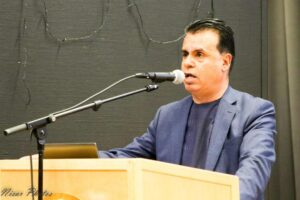
“ISIS is a phenomenon which is not only posing a threat to Afghanistan but to the region and beyond,” an Afghan expert Dr. Hikmat told Harici.
Concerns relating to ISIS have several dimensions and aspects, and according to Hikmat, it’s a project being run by the regional and world powers against the current Afghan government under Taliban leadership.
It’s a crystal fact that ISIS is fighting the current government, but the positive point is that Taliban has a clear standpoint against this brutal group, and they have already arrested dozens of them.
“But still there is a huge concern. If the interests of regional countries and beyond are dispirited in Afghanistan, they may turn to use ISIS against each other and abuse the Afghan soil,” Mr. Hikmat said.
In such a scenario, Hikmat said that China, Russia, Iran and Central Asian countries have their own concerns, and they support any efforts against ISIS for the sake of peace in the region.
There is a need for formation of a regional coalition against ISIS, otherwise, the fire will soon erupt to other countries and dealing with a bigger wild snake would be highly costly.
At the same time other extremist groups who have inactive presence could soon turn into active. “Extremist groups are not acceptable for the Afghan people, and the killing of al-Qaeda leader Ayman al-Zawahiri adds more salt to the wounds of Afghans,” the expert added.
The Taliban, indeed, is fighting against ISIS with a strong commitment and honesty, but at somehow they could not able to control ISIS’s influence and rescue the Afghan people from its scourge of terrorist activities.
Discussions over Pakistan
However, all the blame is attributed to the controversial neighbor Pakistan and has been accused of implementing and taking such projects from “west and east.”
“The Army and intelligence of Pakistan (ISI) working with US and UK to maintain their interests in Afghanistan and unfortunately the wrong policy of Pakistan lead to the influence of terrorist groups into the region,” the war pundit believes.
Optimistic and pessimistic scenarios
Meanwhile, Taliban can benefit from growing regional perceptions of ISIS as a grave threat, repeatedly like Russia, China and Iran could help Taliban to fight this group. It also raises a chance for the Taliban to receive support from other countries for counter-terrorism purposes.
In an optimistic circumstance, ISIS would not have a significant impact on Afghan society nor find a concert response from the Afghans due its foreign origin but to carry more deadly attacks. Over 30 worshippers were killed and dozens more wounded in Wednesday evening’s blast inside a mosque in Afghan capital Kabul.
In a pessimistic view, ISIS will approach to recruit the criminals released from jails in line with the general amnesty declared by the Taliban soon after regaining power in August. Also poverty is the main reason where ISIS sees it as an opportunity to strengthen its rank. During winter time, when many Afghans were scrambling with food, ISIS focused on recruiting personnel but switched to deadly attacks soon at the beginning of summer.
They use poverty to persuade people
ISIS can’t use Islamic rules and regulation as the core reason for its war, but definitely use joblessness and poverty as a propaganda tool in a country where its people are facing a severe humanitarian crisis. It’s not a big decision for improvised Afghans to join ISIS in return for salaries in dollars.
“Afghanistan would never become a ISIS stronghold and we promise this to our citizens,” the senior Taliban official said.
The Afghans have suffered miserably in the last 43 years due to the war, the official assured to work for an Afghanistan to live in peace with itself, neighbors and world far away from extremist groups.
ASIA
South Korea: Debate erupts over constitutional revision

Lee Jae-myung, leader of the opposition Democratic Party (DP) in South Korea, stated on Monday that he agrees the Constitution should be revised. However, he added that the immediate focus should be on resolving the social unrest stemming from former President Yoon Suk Yeol’s unsuccessful martial law proposal.
Lee’s statement came a day after National Assembly Speaker Woo Won-sik suggested holding a national referendum on constitutional revision before the presidential election, which must occur within 60 days following Yoon’s removal from office by the Constitutional Court this past Friday.
Lee effectively rejected Woo’s proposal, stating, “Constitutional revision is necessary, but ending the insurrection must come first.”
In addition to the impeachment, Yoon faces separate criminal charges related to insurrection for the brief martial law he declared on December 3.
Lee conditionally agreed to the amendment, pointing out the legal challenges of holding a referendum in conjunction with the election, given that early voting is not permitted for referendums under current law.
“If the National Referendum Act is revised and a constitutional amendment becomes practically feasible, we can do it immediately,” he said.
Lee conditionally supported a constitutional amendment that reflects the spirit of the 1980 pro-democracy uprising in Gwangju and tightens the requirements for declaring martial law.
Lee, who narrowly lost to Yoon in the 2022 presidential election, is seen as a leading candidate in the upcoming race. The government is expected to approve June 3 as the election day at Tuesday’s cabinet meeting.
ASIA
China announces 34% retaliatory tariff on US imports

Beijing has announced it will impose an additional 34% tariff on imports from the US, retaliating against taxes announced this week by Donald Trump in line with his aggressive trade agenda. This rate is the same as that announced by the US President against China.
The Ministry of Commerce announced on Friday that the tariff will apply to all imported goods of US origin starting from April 10.
Following the US President’s announcement of 34% “reciprocal” tariffs in addition to existing customs duties, taxes applied to Chinese exports will exceed 60%.
Beijing has condemned the US’s new taxes as “a typical act of unilateral bullying” that “does not comply with international trade rules and seriously damages China’s legitimate rights and interests.”
Chinese Foreign Ministry Spokesperson Guo Jiakun criticized the US’s “reciprocal tariffs” on Thursday, stating that the move seriously violates World Trade Organization rules and undermines the rules-based multilateral trading system.
The spokesperson stated, “China strongly opposes the US’s move and will resolutely take countermeasures to protect its legitimate interests.”
This swift response indicates that Beijing will also play hardball against the US.
Previously, US President Trump had stated that he was willing to make a deal in exchange for Beijing approving the sale of social media company TikTok.
As part of the retaliatory measures, Beijing also imposed export controls on 16 American companies and suspended the eligibility of six US-linked companies to export to China.
Eleven more US companies, including US drone manufacturer Skydio, were added to the unreliable entities list. In addition, China will place further restrictions on the export of certain rare earth minerals.
News of the tariffs on Thursday wiped 2.5 trillion USD from US markets, which experienced their steepest declines since 2020.
According to China’s cabinet State Council, the Chinese tariff will take effect from April 10.
Trump’s tariffs trigger $2.5 trillion wipeout on Wall Street
ASIA
South Korean president Yoon impeached: What happens next?
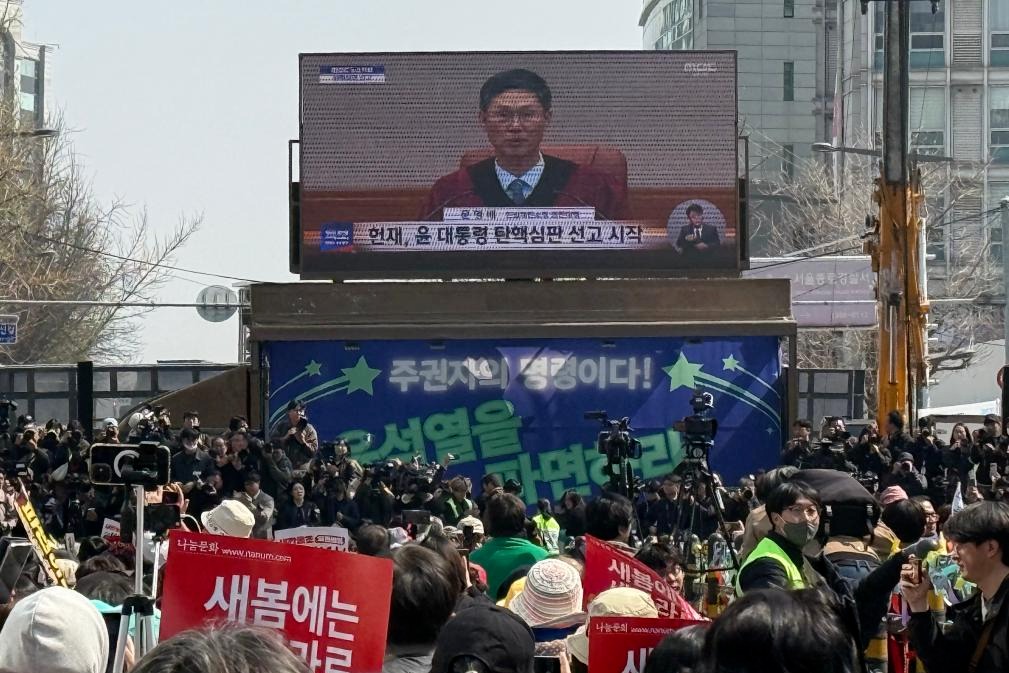
The Constitutional Court unanimously upheld President Yoon Suk Yeol’s impeachment on Friday, following his declaration of limited martial law in December.
The decision, read by Chief Justice Moon Hyung-bae and broadcast live on television, took immediate effect. The country must hold an early presidential election within 60 days to choose Yoon’s successor, with the election expected to take place on June 3.
Yoon was impeached by the National Assembly in mid-December for violating the Constitution and laws by declaring martial law on December 3, deploying troops to the opposition-controlled National Assembly to prevent lawmakers from voting on the decree, and ordering the arrest of politicians.
Chief Justice Moon stated, “The negative impacts on the constitutional order and the implications of the respondent’s violation of the laws are very grave. The benefits of protecting the Constitution by removing the respondent from office outweigh the national losses incurred by the impeachment.”
The decision concluded a contentious four-month period that began with Yoon’s surprise declaration of martial law, which significantly damaged the country’s political, economic, and social fabric.
In a statement released by his legal team, Yoon apologized to the public for failing to meet their expectations and thanked them for their support.
“My dear citizens, it has been a great honor for me to work for the Republic of Korea,” he said. “I will always pray for the beloved Republic of Korea and for you.”
What offenses did the case involve?
The case centered on whether Yoon violated the law by committing five key actions: declaring martial law, preparing a martial law decree, deploying troops to the National Assembly, raiding the National Election Commission, and attempting to arrest politicians.
The court agreed with all charges, including that he did not meet the legal requirements for declaring martial law. According to the Constitution, a president can declare martial law during wartime or an equivalent national emergency.
Yoon justified his actions by accusing the main opposition party of paralyzing state affairs by repeatedly accusing officials in his administration and attempting to cut the state budget.
The court rejected this claim.
Chief Justice Moon stated, “He neglected his duty to protect the Constitution by undermining the authority of a constitutional institution and infringing upon the fundamental human rights of the people through the mobilization of soldiers and police.”
He added, “The respondent’s actions that violated the Constitution and the laws are a betrayal of the public’s trust and, from the perspective of protecting the Constitution, constitute a grave violation of the law that cannot be tolerated.”
With eight justices currently on the bench, at least six justices had to agree to approve the impeachment motion.
The key issue was not only whether Yoon violated the laws but also whether this violation was serious enough to warrant impeachment.
Yoon did not attend the court for the decision.
How did the ruling and opposition parties react to the decision?
Acting President and Prime Minister Han Duck-soo addressed the nation, pledging to do his best to manage the upcoming elections to ensure a smooth transition to the next administration.
The ruling People Power Party stated that it “humbly accepts” the court’s decision, while the main opposition Democratic Party (DP) hailed it as a “victory for the people.”
DP leader Lee Jae-myung, seen as a leading candidate in the next presidential election, read a separate statement from the National Assembly.
“The great people have reclaimed the great democratic republic, the Republic of Korea,” he said. “Together with the people, we will restore the destroyed livelihoods of the people, peace, the economy, and democracy with a great spirit of unity.”
According to a Gallup Korea poll conducted from Tuesday to Thursday on 1,001 adults, 52% wanted an opposition candidate to win the next election, while 37% supported a candidate from the ruling party.
Lee received the most support as the next head of state, with 34%, followed by Labor Minister Kim Moon-soo from the ruling bloc with 9%. The poll had a margin of error of ±3.1% at a 95% confidence level.
According to Yonhap news agency, the decision led to sharp divisions among Yoon’s supporters and opponents.
Outside the official presidential residence in central Seoul, anti-Yoon protesters gathered, holding signs that read, “Impeach Yoon Suk Yeol.”
A few meters away, a group of Yoon’s supporters expressed their shock. Some angrily hurled abuse, while others fell to the ground and wept loudly.
Second president to be impeached
Thirty-eight days was the longest time the court has taken to issue a decision on a president’s impeachment after the final hearing.
In the past cases of former Presidents Roh Moo-hyun and Park Geun-hye, the court had taken 14 days and 11 days, respectively.
It took 111 days from the day the impeachment motion against Yoon was submitted to the court on December 14.
In addition to the impeachment case, Yoon is also being tried on charges of inciting insurrection through the martial law proposal, a crime punishable by a maximum sentence of life imprisonment or death.
Yoon, who was arrested in January and held in a detention center until early March due to these charges, was released following a court decision that his detention was invalid.
Yoon, who rose from a senior prosecutor to president in three years, became the country’s second president to be impeached.
Yoon, 64, followed in the footsteps of former President Park Geun-hye, who was impeached in 2017 when the Constitutional Court upheld her impeachment over a corruption scandal.
Yoon’s journey
Before reaching the country’s highest office, Yoon began his career as a prosecutor in 1994. He rose to prominence by leading an investigation team into Park’s corruption scandal, ultimately leading to Park’s impeachment and subsequent imprisonment.
In 2019, he was appointed as the country’s top prosecutor by then-President Moon Jae-in but clashed with the administration as he pursued investigations into the family members of former Justice Minister Cho Kuk.
Faced with increasing pressure from the Moon administration, Yoon resigned from his position in 2021. Shortly thereafter, Yoon entered politics and won the 2022 presidential election as the candidate of the conservative People Power Party.
Yoon’s term was marked by conflicts with the National Assembly, which was dominated by the main opposition Democratic Party. Yoon exercised his presidential veto power against 25 bills passed by the National Assembly.
Tensions with the DP peaked in early December when the main opposition introduced motions to impeach the country’s top auditor and a senior prosecutor, leading to Yoon’s declaration of martial law on December 3, which ultimately led to Yoon’s downfall.
-
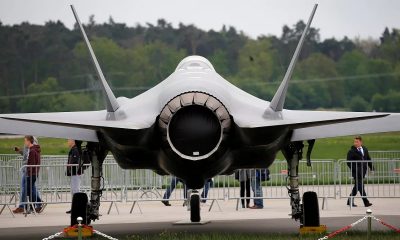
 EUROPE2 weeks ago
EUROPE2 weeks agoF-35 debate intensifies across Germany and Europe
-

 ASIA2 weeks ago
ASIA2 weeks agoBeijing’s energy rules threaten Nvidia H20 chip sales in China
-
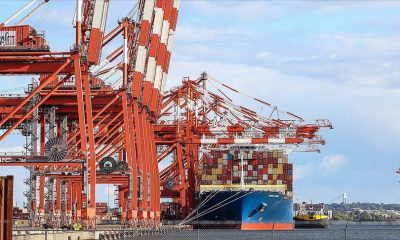
 DIPLOMACY2 weeks ago
DIPLOMACY2 weeks agoTrump’s proposed fees on Chinese ships threaten US maritime industry
-
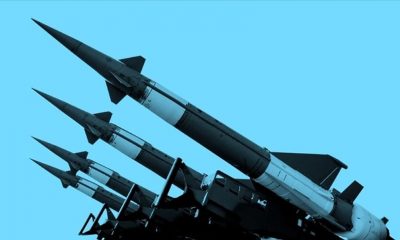
 EUROPE2 weeks ago
EUROPE2 weeks agoCalls for German nuclear armament grow louder
-

 EUROPE1 week ago
EUROPE1 week agoHuawei lobbying investigation leads to searches at EP offices in Strasbourg
-

 EUROPE2 weeks ago
EUROPE2 weeks agoLeaked draft reveals German coalition disagreements on key policies
-

 ASIA2 weeks ago
ASIA2 weeks agoSadiq Khan’s prompt trip to Kabul; Pakistan is really sidelined on Afghan front
-
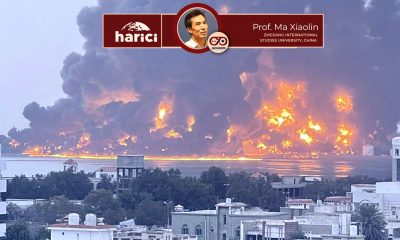
 OPINION2 weeks ago
OPINION2 weeks agoThe Houthi War: The “Sixth Middle East War” and the Palestinian Narrative








